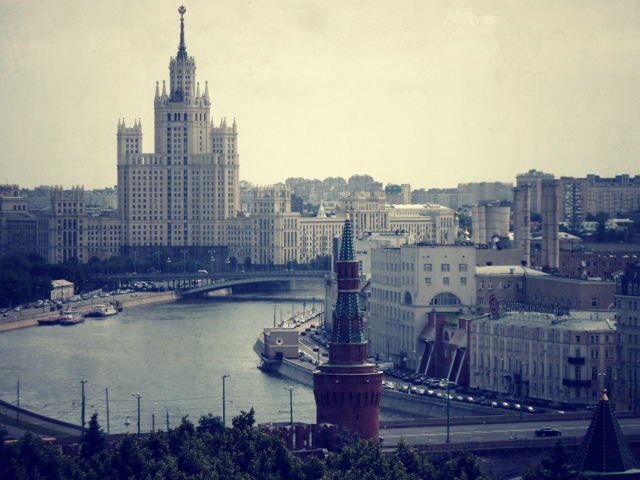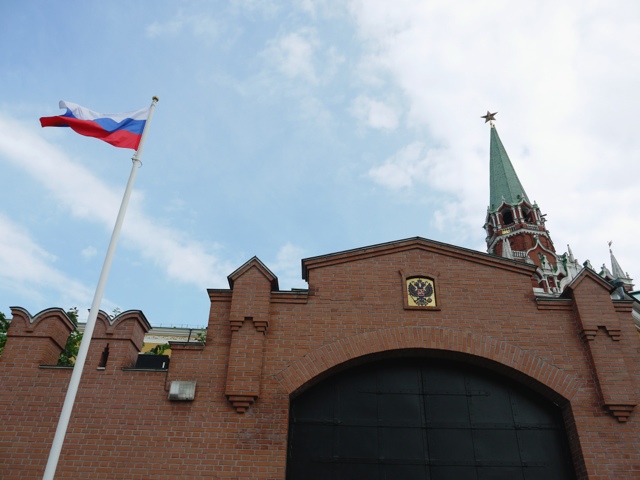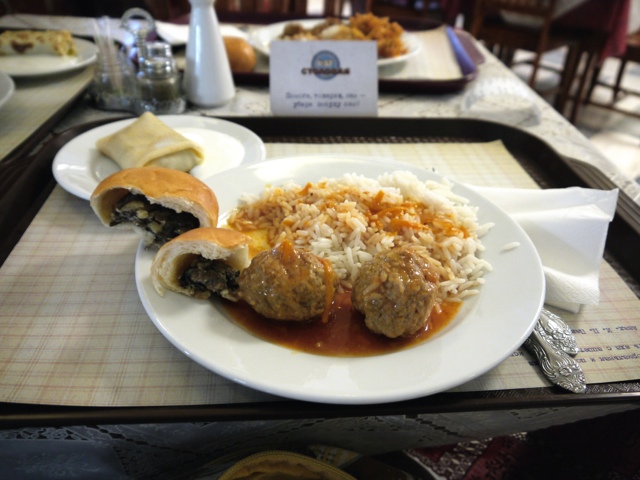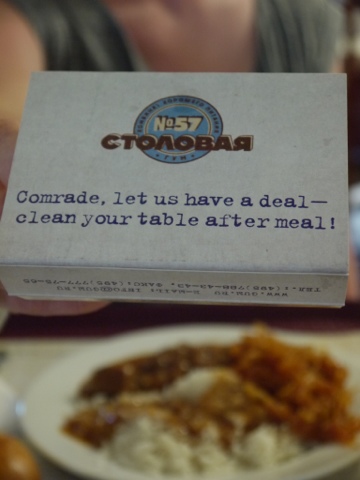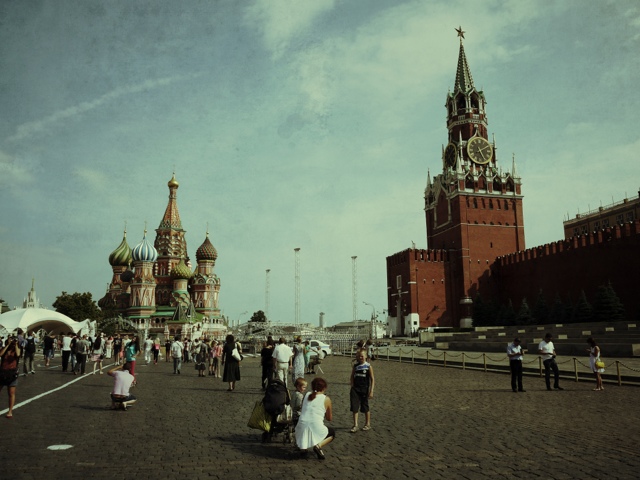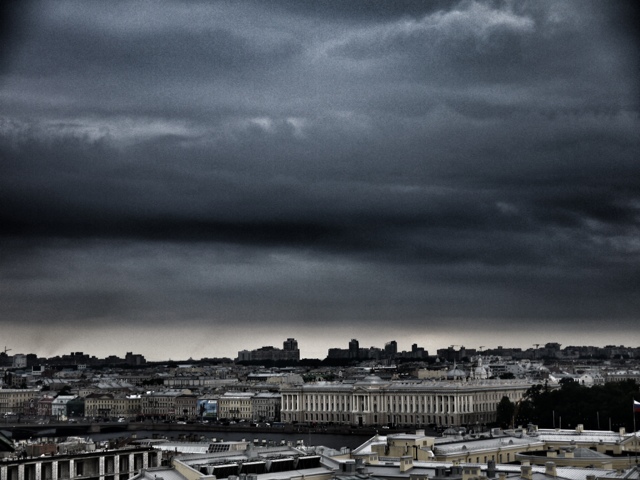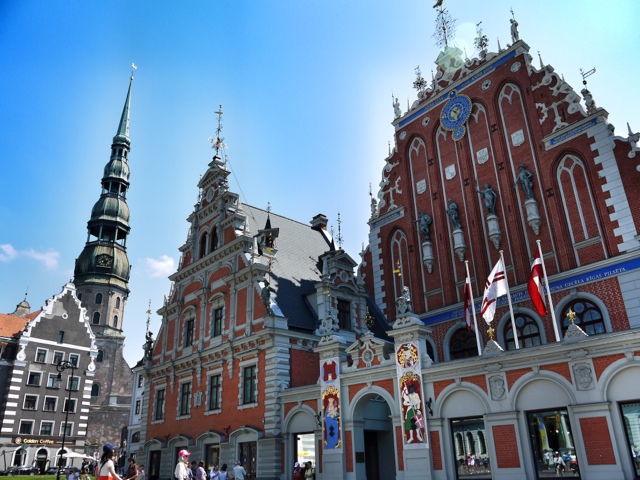This morning, whilst enjoying a dark, strong Russian coffee in a cafe on one of the busiest roads in Moscow, I read a BBC feature about a Russian prisoner, held in a village near the arctic circle (having been recently moved from an even worse prison in Siberia). He was an oligarch who opposed Putin in the Duma, and was currently serving 18 years for embezzlement. Depending on your viewpoint, the reader would take two things from this story: either that corruption and embezzlement is still rife in the Kremlin, or that the current Russian administration locks up its dissenters (a story which is a little too familiar). The latter is backed up by the well publicised imprisonment of Pussy Riot, and a promising leader of the opposition party, both of whom are still awaiting trail. Had I read this three weeks ago, at home, I would have shared these views. But sitting in the Russian sun, as the millions of inhabitants of Moscow fly by on their way to work, in the shadow of one of Stalin's sisters (huge skyscrapers which are testament to the might of this frightening era), it is hard to simply dismiss Russia as corrupt and brutal. That was not our experience at all. Russia was summed up for me by our pint sized Moscow tour guide (Moscow Free Tours, outstanding, so good in fact, that I bet she made far more from tips than if she'd charged). She stood taller than her 5 feet, in front of the Kremlin and announced that she was born in 1988 and was proud to have been born in Communist Russia, but was also proud to live in, what she called, a Putinocracy. We all looked nervously over our shoulders, surely the secret police who are still based in the old KGB building heard that? She can't say that in Red Square can she? She saw our faces and laughed. 'We call it a Putinocracy' she explained, 'because we can. We are free to say what we like now.' She told us a story: an American diplomat said to a Russian in the 1980s, 'We have so much more freedom than you, I can go to my head of state's building and say: 'I hate Reagan and how he runs his country.' The Russian laughed, 'Don't pity us, we have the same liberties. I too can go to my head if state's building and say: 'I hate Reagan and how he runs his country.' Then she laughed again, and every one of us on the tour realised we'd greatly misunderstood Russia.
The complicated, revolutionary and brutal history of 20th century Russia is well documented. When I was at school I learnt that Stalin was an awful dictator, of whom everyone was frightened. I learnt of his tyranny, which history teachers were especially keen to compare to that of a certain Nazi contemporary. I learnt of the wall he built, metaphorically and physically, between the USSR and Western Europe. I thought that Stalin would be a dirty word in Russia. During our first day in Moscow, I came across Stalin in three times: the endless jokes our tour guide told about his tyranny (the brown circle line on the metro was actually a coffee cup ring he left on the plans and the architects were too scared to ask him about it); his tomb and statue in Red Square; and his look alike posing for photographs outside the Kremlin. I'll let you draw your own conclusions about this.
Moscow was shaped by the USSR. Stalin designed and implemented the city's extensive underground metro system, and every station is like a little shrine to communism. We saw hammer and sickle mosaics, surrounded by victorious scenes of the Red Army, and classical bronze statues showing key players in communist Russia: workers, mothers, soldiers, athletes etc. Stalin's sisters dominate every view in the city. They are like silent giants, who move positions when you blink, spies, always watching. There are seven of them, but I swear I saw about thirty. Russia is not ashamed of its communist history, any more than its current leader.
In 1989, the wall came down, and a period of great instability followed, which did not really end until Putin came in in 1999. This, our guide tells us, 'is why we are grateful. you keep your democracy, we like it this way.' And in this way, Russia still feels like nation new to tourism. Despite claiming the largest collection of billionaires in the world, Moscow has disgraceful public toilets, and English is not prevalent. The underground metro is still entirely in the Cyrillic alphabet, making choosing a line, a direction and a stop, a proper game of (Russian) roulette. We got lost several times, and were almost bowled over by people keen to help. We found that if we asked anyone loudly enough (I know, I know, shouting English is so uncouth), someone in the vicinity would understand and come racing over to help. Far from the grumpy or scary stereotypes I had expected (which doesn't say much about me) we found Russians to be full of kindness. Everyday people tried to help us, communicating through mime if necessary.
Local Russian food is quite unbelievably gross, bread stuffed with potato and mushrooms is probably as close to tasting vomit as you will ever come. And the fact many 'traditional' Russian restaurants are very cheap buffet style canteens show that this cuisine is another throwback from the soviet era. It's hard to develop a national dish when half your people are starving.
If St Petersburg was built by Peter the Great, for Tsars and Empresses, Moscow is a city entirely shaped and built by the communists. And after the USSR dissolved, when Leningrad hurriedly changed its name back to St Petersburg, Moscow continued as it was, as it always would be. Ordinary people, doing ordinary things, joking about the big guys who make the decisions.
I felt sad reading the article which was so quick to dismiss Russia as corrupt. Much of my history was taught to me at a time when there were no lines of communication between the USSR and the West, and consequently I probably had a rather biased view. But now we have no excuse. Russia is not perfect by any means, but she is worth more than stories which just cover Pussy Riot and imply a underlying culture of fear. The Russian Museum of Contemporary History and its army of old ladies who invigilate the galleries (mostly with their eyes closed and snoring) tell a very unbiased view of Russia in the 20th century, and is far more interesting than the state and pomp of the more famous state museums, with their collection of imperial wealth. Nevertheless, it is the juxtaposition of these, and the honesty of showing both sides of Russian history which makes Moscow so unique and balanced. Moscow has not purged or edited its history. The Red Square is the epitome of this: its landmarks include the most famous of all traditional Russian cathedrals, St Basil's; the Kremlin with its treasures, its cathedrals, and its hard concrete communist palace; and in the centre of Red Square, in front of Stalin's tomb, the huge mausoleum which houses Lenin's waxy yellow body. The 'red' of red square doesn't represent the brilliant red stones the Tsars chose to build their Kremlin, nor the Red Army who marched on it for almost a century. Red means beautiful. Perfect.
Perhaps it is time to take a lesson from Moscow and her guides and museums, and start sharing a new, more balanced history of Russia.
